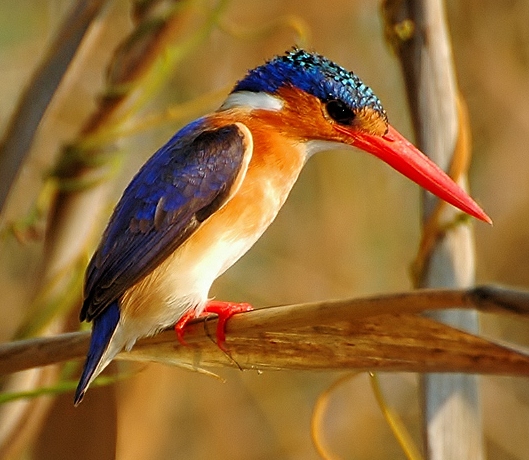Ispidina picta
 |
| Photo by Gerard Calberac (Trek Nature) |
Common name:
African pygmy kingfisher (en); pica-peixe-pigmeu (pt); martin-pêcheur pygmée (fr); martín pigmeo africano (es); zwergkönigsfischer (de)
Taxonomy:
Order Coraciiformes
Family Alcedinidae
Range:
This African species is found throughout sub-Saharan African, from Mauritania and Mali across to Ethopia and Eritrea, and south all the way to South Africa.
Size:
This tiny kingfisher is 11-13 cm long and weighs 12-13 g.
Habitat:
They are found in a wide range of woodland habitats, namely savannas and riverine forests, but also scrublands, grasslands, open rivers and streams, coastal bushes, plantations and gardens. they are present from sea level up to an altitude of 1.500 m.
Diet:
African pygmy kingfishers mostly eat insects, namely crickets and grasshoppers, beetles, flies, butterflies, moths and caterpillars. They also eat spiders, millipedes, crabs, frogs, skinks and lizards.
Breeding:
These birds breed in October-December. They nest in burrows dug into an earthen banks, such as a erosion gullies, stream banks, termite mounds, trenches and pits. There the female lays 3-6 eggs which are incubated by both sexes for 18 days. The chicks are fed by both parents and fledge 18 days ater hatching, becoming fully independent soon after fledging.
Conservation:
IUCN status – LC (Least Concern)
This species has an extremely large breeding range and is described as frequent to common, although uncommon at the periphery of its range. In some areas deforestation may have a negative impact on this species, but overall the population is suspected to be stable in the absence of evidence for any declines or substantial threats.







